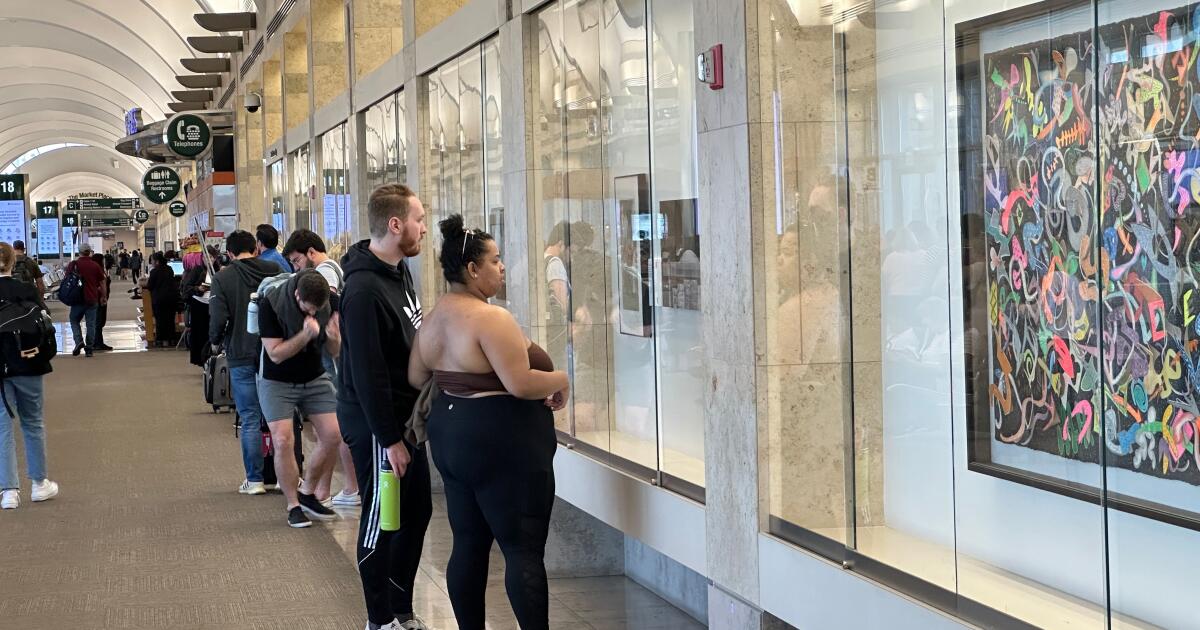The big holiday travel wild card

Table of Contents
(CNN) — Flight chaos over the summer has air travelers on edge as Americans head into what’s expected to be the busiest holiday travel season since 2019.
By all accounts — from airlines, industry groups and aviation analysts — US air carriers are in a much better position than they were this summer to avoid operational meltdowns over the holidays.
“They’ve adjusted their schedules, they’ve been on hiring binges, on putting people in the right places that we hope will be at the right time,” said Nick Calio, president and CEO of Airlines for America, an industry group representing US air carriers.
United Airlines has said it’s on track to hire 15,000 employees in 2022, and Delta Air Lines CEO Ed Bastian told CNN the company has hired 25,000 people since the start of last year and is still hiring.
Airlines have now passed 2019 staffing levels, according to Airlines for America, and US carriers have adjusted their staffing models to account for factors such as increased absenteeism. US airlines also have increased the staffing reserves they have on hand, the group said, and it also pointed to a less concentrated holiday travel period as Americans who can work remotely have more flexibility.
“I would not say we’re out of the woods yet,” said Transportation Secretary Pete Buttigieg at Chicago O’Hare International Airport on Monday. “But I am cautiously optimistic about this week being off to a good start.”

Travelers wait at a security checkpoint at Seattle-Tacoma International Airport on November 24, 2021. Holiday air travel is up this year.
Lindsey Wasson//Reuters
But there’s still a big wild card — one that long predates problems aggravated by the pandemic. It’s a force that has a way — even when predictions are dead-on — of shattering the best-laid plans.
“I always worry about the weather because that’s the number one thing that can ruin a flight or a flight pattern,” Calio told CNN’s Pete Muntean.
Bastian said recently on NBC’s “Today” show that Delta has enough pilots, planes and customer service for the holiday season and plans are in place for dealing with bad weather.
Kathleen Bangs, a spokesperson for flight tracking site FlightAware, pointed out that airline operations last Thanksgiving were quite smooth. Overall US cancellations were only 0.4% and delays were just under 15% for the holiday week — from Sunday to Sunday.
She put that performance down largely to “outstanding weather across most of the United States.” And the holiday was before the Omicron variant brought a steep uptick in airline staff absences over Christmas.
Fewer seats
While weather is the biggest variable, “there are simply fewer seats flying than in 2019, meaning fuller flights and fewer empty seats in which to re-accommodate customers from delayed and canceled flights,” said airline industry analyst Bob Mann, of R.W. Mann & Company.
Staffing has certainly improved since summer, he noted, but how airlines implement their contingency plans will be key to their success.
Some major US airlines still aren’t flying at their pre-pandemic capacity.
Delta’s network capacity is down about 15% compared to pre-pandemic levels.
Over Thanksgiving, United Airlines expects to operate more than 3,700 flights per day on average — about 90% of 2019’s volume. Yet the airline anticipates about the same number of travelers as 2019.
And the situation isn’t unique to United.
“That means — to fly the same or almost the same amount of people … — but with less flights — the airlines are using their larger equipment, relying more on mainline jets than regionals, and filling every last seat,” Bangs explained via email.

A traveler traverses the skywalk at Baltimore/Washington International Airport November 21, 2022.
Amy Davis/The Baltimore Sun/Tribune News Service/Getty Images
United did add 275 extra flights on Sunday, November 27, to help meet demand. The carrier expects Sunday to be its busiest travel day since before the pandemic.
John Grant, chief data analyst for aviation database OAG, said that overall US domestic capacity during Thanksgiving week is going to be at about 95% of its 2019 level.
He expects near 100% load factors on nearly every flight during the holiday period.
“And if you end up with an empty seat next to you, you’ve won the lottery,” Grant said.
Airlines and agencies such as the Transportation Security Administration “are as geared up as they can be barring any unforeseen natural event such as weather,” Grant said.
“If it doesn’t snow, I think you’ll be OK.”
Tips for making holiday air travel smoother
Make sure you’re aware of the weather.
If you know where the big fronts are and where winter storms are expected, “that gives you an option to change your routing before you commit to your departure,” FlightAware’s Bangs said.
Stay alert to flight changes and travel advisories.
Your airline’s app and apps like FlightAware will keep you up-to-date on changes. Check your airline’s website for travel alerts or advisories that may allow for fee-free changes in cases of bad weather.
Be aware of what your airline will do in cases of long delays or cancellations.
Take carry-on luggage.
“Try to take that carry-on and not check a bag. It’s only four days,” said Paula Twidale, senior vice president of travel at AAA.
Have a contingency plan for carry-ons.
Crowded flights may mean that carry-on luggage — plus heavy coats and gifts — will fill up overhead bins fasts. And passengers may have to check their roller suitcases at the gate.
That means being ready to quickly swap what you really need — valuables, medication, etc. — from your suitcase into a smaller bag that fits under your seat.
“The airline cannot take that under the seat bag away from you, but they can stop roller bags and duffel bags, etc. from boarding once they see the bins getting full,” Bangs said.
Take early morning flights, “which tend to go out on time,” Twidale said.
Make parking reservations early.
“Don’t assume there’s going to be a parking space available” at airport onsite or offsite parking lots, Twidale said.
Tips for drivers
The vast majority of Americans — nearly 49 million of the 54.6 million traveling for the holiday — are driving to their destinations for Thanksgiving, and AAA has tips for them too:
Steer clear of highways on Wednesday afternoon.
The window between 11 a.m. and 8 p.m. is expected to be the most congested.
Hit the road early on Thanksgiving Day.
On Thursday, the morning hours before 11 a.m. will be less congested.
Avoid this later time period over the weekend.
AAA recommends steering clear of the time between 4 p.m. and 8 p.m. on Friday, Saturday and Sunday.
CNN’s Pete Muntean contributed to this report.






